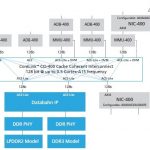The annual ITC event is happening this week in San Diego as semiconductor test professionals gather from around the world to discuss their emerging challenges and new approaches, so last week I had the opportunity to get an advance look at something new from Siemens named Tessent In-System Test software. Jeff Mayer, Product Manager,… Read More
Tag: apb
The Inconvenient Truth of Clock Domain Crossings
Almost everything that we do in chip design and verification was invented to raise the abstraction above schematics and polygons. Register-transfer-level (RTL) design, functional simulation, logic synthesis, floorplanning, and more fall into this category. Even the notion of binary circuits is an abstraction. Underneath… Read More
One chip and the MCU variant challenge disappears
Merchant microcontrollers are usually made available in a wide range of variants based on one architecture with different peripheral payloads and packaging options. A couple of companies, notably Cypress with their PSoC families and Silicon Labs with the EFM8 Laser Bee… Read More
Effective Verification Coverage through UVM & MDV
In the current semiconductor design landscape, the design size and complexity of SoCs has grown to large extent with stable tools and technologies that can take care of integrating several IPs together. With that mammoth growth in designs, verification flows are evolving continuously to tackle the verification challenges … Read More
Cadence & ARM Optimize Complex SoC Performance
Now a day, a SoC can be highly complex, having 100s of IPs performing various functionalities along with multi-core CPUs on it. Managing power, performance and area of the overall semiconductor design in the SoC becomes an extremely challenging task. Even if the IPs and various design blocks are highly optimized within themselves,… Read More





